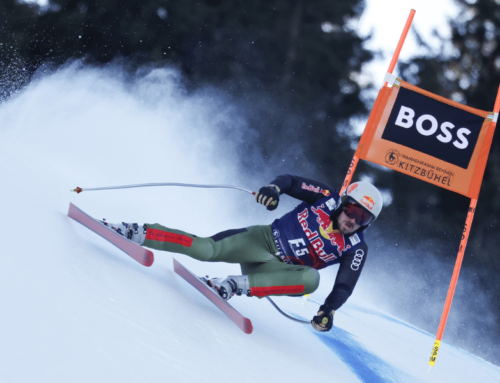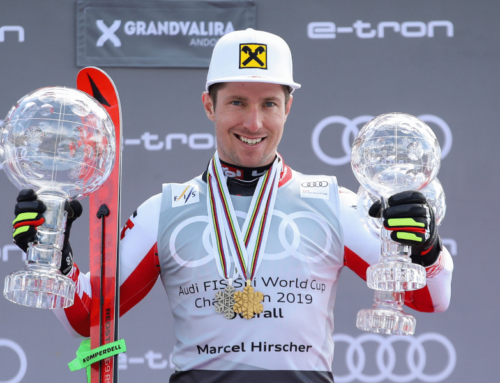The 5 attitudes you need for ski racing success
There are five important areas related to the psychology of ski racing: attitudes, obstacles, preparation, mental muscles, and tools. This article introduces the first essential area – attitudes – and explains why they are so important to ski racing success.
The dictionary definition of attitude is, “The way you think and feel about something … a way of thinking and feeling that affect a person’s behavior.” Athletes hold attitudes about their ski racing that have a direct impact on how they train and race. You may not even be aware of some of these attitudes and, as a result, not be aware of how they affect you, whether positively or negatively.
Let me introduce you to the five attitudes that I believe most influence your ski racing efforts.
Ownership involves the connection that you have with ski racing and why you ski race. Do you own your ski racing? What this question gets at is whether you are taking control of everything that impacts your ski racing. You don’t want to leave anything that might affect your skiing to chance or to other people. Whether physical, technical, tactical, equipment, or mental, you will only achieve your ski racing goals if you take full responsibility for every aspect of your ski racing.
Process
We live in a world where results matter. You don’t get ahead because you’re a nice person or because you try hard (though effort is usually related to results). You progress because you get results. Contrary to popular belief, though, focusing on results actually prevents you from getting the results you want for two reasons. First, if you’re focusing on the finish line – where results occur – you’re not focusing on what you need to do to get those results, namely, what you need to do to ski fast from the start to the finish. My basic belief is: “Results matter, but to get them, ignore them.” The bottom line is that if you focus on the process, there’s a better chance that the results will come.
Challenge
I often see skiers responding to races or difficult snow or weather conditions as a threat. This threat reaction causes doubt, worry, and tension, resulting in tentative and cautious skiing. In a way, perceiving a race as a threat causes your inborn fight-or-flight response to be triggered and, most often, flight is the option that is chosen. When I say flight, I don’t mean running away from the starting gate, but rather skiing in a protective mode, safe and within your comfort zone.
To ski your fastest and attain your goals, you must see every aspect of ski racing as a challenge to pursue, not a threat to avoid. This challenge reaction creates confidence, determination, intensity, and excitement, resulting in aggressive and fast skiing. Your fight-or-flight response may still be triggered, but, when you feel challenged, you choose to fight, not flee.
Long-Term
We live in a culture that is accustomed to getting everything fast and without much effort (think microwaves, instant messages, and Internet searches). We also live in a culture where, as I indicated above, results seems to matter immediately. As a result, it’s easy to believe that you need results right away or you won’t achieve your ski racing goals. It’s also easy to become impatient and frustrated when you don’t get those results right away, particularly when you see your competitors getting the results that you want.
But the reality is that results don’t come quickly or easily or necessarily when you want them to. Having a short-term attitude about results only places expectations and pressure on you that actually slow your progress.
For you to have your best chance of achieving your ski racing goals, you must adopt a long-term attitude toward your development. With this attitude, you will be patient, allow yourself to develop at your own pace, and you will actually ski better now because you’re not stressed out about results, thus better positioning you to get the results you want when they really matter at some point in the future.
Risk
Ski racing is an inherently risky sport because there are dangers in pushing your limits and going as fast as you can. The course, snow conditions, terrain, and weather all attempt to strike fear in you and prevent you from skiing your fastest. Yes, the risks can be about physical injury, but, more often, it is about failing to achieve your ski racing goals. This aversion to risk results in skiing that may be technically and tactically sound, but that is also safe and, even worse, slow.
The reality is that risk is essential to skiing fast. If you aren’t taking risks, you aren’t skiing as fast as you can. Taking risks can mean skiing through a combination with a straighter line, attacking down a steep pitch, or holding your tuck a second longer. It is these risks that enable you to pick up milliseconds and to ensure that you don’t leave any time on the hill. And it is these risks that enable you to ski your fastest and accomplish your ski racing goals.
These five attitudes will be explored in depth in the first segment of my Prime Ski Racing online mental training program (linked above). I will introduce the next four essential mental areas in upcoming articles.
Cover photo courtesy of Bob Eastaugh






















